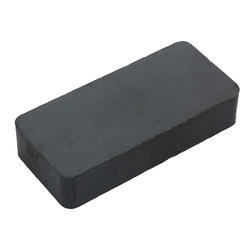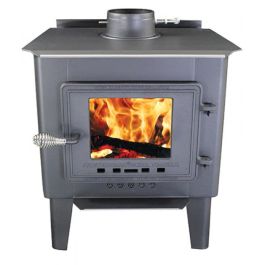Hi all-- I'm not brand-new to heating with wood, but it has been 25 years, and that stove had almost NOTHING in common with this thing. It was a German ceramic stove, which kept the whole house warm all day while using the most minimal wood (plus my wood was extremely dense European hardwood, and my walls were like 4 feet thick).
What I'm working with now feels like child's toy compared to that, but I'm down for the challenge (especially since I have no choice-- I'm renting and this is the stove that is installed.)
That said, it is DRIVING ME MAD to not be able to limit the air intake and solely use this built-in flue damper!! I am burning through wood so quickly as I try to get familiar with the stove before things actually get cold. ALL TIPS WELCOME. I've read through the forums, but not too many posts with this sort of constant airtake situation. Can I bolt something over the holes to reduce the airflow? Or are their issues I am not anticipating? This setup just seems completely bonkers and I cannot understand the logic. Why on earth would there be a bunch of holes just constantly drawing in air? What are my best practices with this thing? What can I do to increase burn time? I know it's a trade-off with creosote formation, but I cannot have this thing running through wood full-pelt like this with all the heat escaping through the flue.
Lastly, my place is only about 400sf but it has high vaulted ceilings and gigantic drafty windows that I will be weatherizing with plastic sheeting to the best of my ability, but it's still not ideal. I'll be heating exclusively with wood. Any tips welcome!
![[Hearth.com] Tips for working with this non-EPA stove WITHOUT adjustable air intake (before I go mad)? [Hearth.com] Tips for working with this non-EPA stove WITHOUT adjustable air intake (before I go mad)?](https://www.hearth.com/talk/data/attachments/317/317233-17a1386ee0df4defb13adf59ab401e67.jpg?hash=5Nog_uuD5x)
![[Hearth.com] Tips for working with this non-EPA stove WITHOUT adjustable air intake (before I go mad)? [Hearth.com] Tips for working with this non-EPA stove WITHOUT adjustable air intake (before I go mad)?](https://www.hearth.com/talk/data/attachments/317/317234-3c0b29435a975555f42feccde007f89d.jpg?hash=nZKnJoUNHy)
What I'm working with now feels like child's toy compared to that, but I'm down for the challenge (especially since I have no choice-- I'm renting and this is the stove that is installed.)
That said, it is DRIVING ME MAD to not be able to limit the air intake and solely use this built-in flue damper!! I am burning through wood so quickly as I try to get familiar with the stove before things actually get cold. ALL TIPS WELCOME. I've read through the forums, but not too many posts with this sort of constant airtake situation. Can I bolt something over the holes to reduce the airflow? Or are their issues I am not anticipating? This setup just seems completely bonkers and I cannot understand the logic. Why on earth would there be a bunch of holes just constantly drawing in air? What are my best practices with this thing? What can I do to increase burn time? I know it's a trade-off with creosote formation, but I cannot have this thing running through wood full-pelt like this with all the heat escaping through the flue.
Lastly, my place is only about 400sf but it has high vaulted ceilings and gigantic drafty windows that I will be weatherizing with plastic sheeting to the best of my ability, but it's still not ideal. I'll be heating exclusively with wood. Any tips welcome!
![[Hearth.com] Tips for working with this non-EPA stove WITHOUT adjustable air intake (before I go mad)? [Hearth.com] Tips for working with this non-EPA stove WITHOUT adjustable air intake (before I go mad)?](https://www.hearth.com/talk/data/attachments/317/317233-17a1386ee0df4defb13adf59ab401e67.jpg?hash=5Nog_uuD5x)
![[Hearth.com] Tips for working with this non-EPA stove WITHOUT adjustable air intake (before I go mad)? [Hearth.com] Tips for working with this non-EPA stove WITHOUT adjustable air intake (before I go mad)?](https://www.hearth.com/talk/data/attachments/317/317234-3c0b29435a975555f42feccde007f89d.jpg?hash=nZKnJoUNHy)



